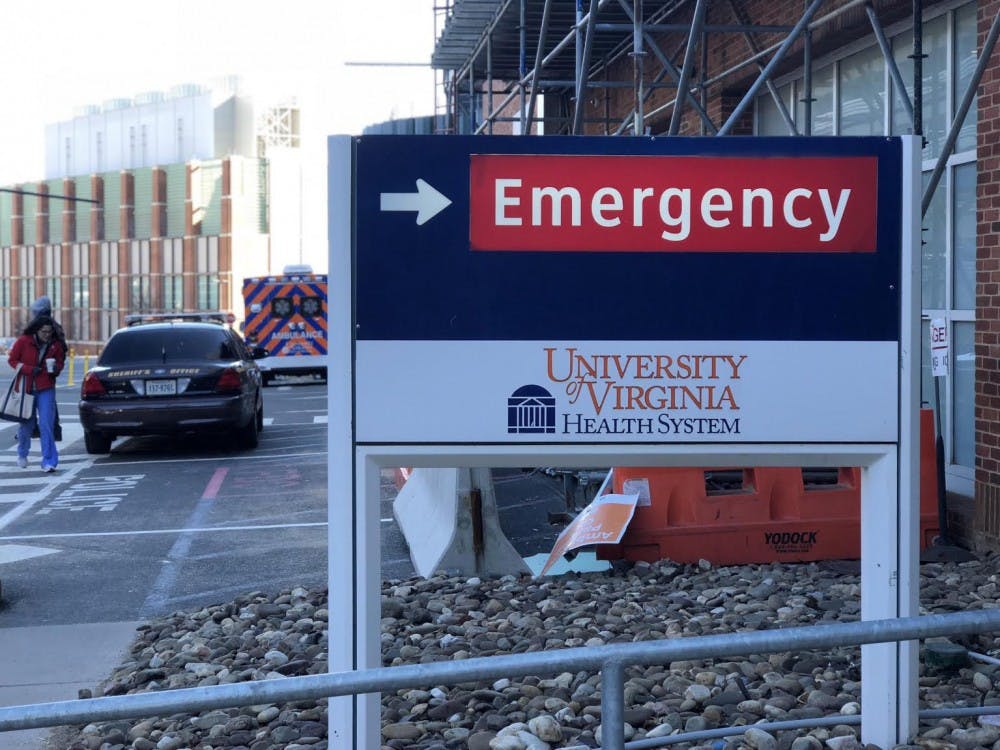This year’s influenza virus has caused severe sickness, hospitalization and death at high rates, according to the Centers for Disease Control and Prevention. As of Feb. 11, the University Health System has encountered 450 lab-confirmed flu cases, including one flu-related death of an adult Charlottesville-area resident.
The deadly influenza virus has affected the University and Charlottesville by causing hospitals to reach high-capacity and employ new strategies to deal with this high volume of cases.
Robert O’Connor, professor and chair of emergency medicine at the Health System, said the overall volume of patients, largely associated with the flu season, has increased by 10-12 percent and increased occupancy in the hospital.
“We’re running close to 100 percent, pretty much at all times,” O’Connor said.
As a result, the Emergency Department has changed some of its strategies and operations.
“We have a doctor who works at the front desk now who we use to intercept some people who need lab work or some diagnostic testing that can be done before they get to a treatment room — just because we’re so full,” O’Connor said.“We’ve been able to manage it. We get people seen just as quickly as we can.”
Jessica Simmons, associate director of General Medicine at Student Health, said in an email that Student Health had 560 flu cases from July 1, 2017 through Feb. 19, 2018. The number of flu cases this year was largest in January and February, with 346 and 201 patients, respectively.
“Our numbers this year have surpassed the total numbers of each of the previous five years except for 2015,” Simmons said.
According to Simmons, the number of cases in the 2015 academic year, defined as July 1-June 30, was 675 cases. Simmons expects the number of cases this year will continue to increase, as the flu season is still ongoing.
Despite the large volume of cases, Simmons said Student Health is committed to delivering timely care to students, so wait times have not increased.
“We have basically ‘worked students in’ to our existing schedules,” Simmons said. “Our triage nurses do use a protocol so that they can ‘triage’ students with probable influenza to appropriate appointment times. We have also canceled scheduled clinic meetings so that we can see more patients — we routinely do this during busy times.
Outside the Health System and Student Health, flu cases have impacted other Charlottesville health practices. Andrea Chapman, an infection control practitioner at Sentara Martha Jefferson Hospital, said the week ending Feb. 17 was the twelfth week of widespread flu activity.
“Influenza from a regional and state standpoint is characterized based on how widespread it is, and so widespread flu activity is at the highest level, meaning that it is in the majority of regions and there’s lab-confirmed flu and there are likely outbreaks throughout the scene,” Chapman said.
According to Chapman, in previous years in Virginia, there have been 11 or 12 weeks of widespread flu activity, consistent with this year’s numbers thus far.
“But the fact that we’re still seeing such high volumes tells me that it’s still going to be several more weeks at this widespread flu activity level,” Chapman said.
More specifically, Chapman said that within the week up to Feb. 17, Martha Jefferson saw 100 patients — the highest number this flu season — 22 of which were admitted to the hospital.
“Certainly, this season has been a bad flu season—a lot of people getting sick, not just patients coming to visit us but it certainly has affected our staff with contracting the flu,” Chapman said.
In addition to the challenge of ensuring enough healthcare workers, Chapman said the in-patient facilities at the hospital have been full.
“We have tried to provide some messaging to our patients especially those who present to our emergency department that there may be some more of a wait this season compared to other seasons or other times of the year just because of the high patient volume,” Chapman said.
The hospital has employed various strategies to deal with the large volume of cases, according to Chapman. For example, during January and February, the hospital opened a unit only used during high capacity occasions to accommodate additional patients.
“On the [Emergency Department] side of things, we have a triage process in place, so we try to really identify what the issue is that the person is presenting with and try to make that decision point about, ‘Is this a patient who will need hospital admission?’ or ‘Is it someone we can assess quickly?’ Chapman said.
Despite such a deadly and impactful flu, based on past trends, the flu season is expected to start slowing down over the next few weeks.
“The curve of new cases slowly drops off so that by April or May we’re back down to baseline,” O’Connor said of past trends.
The CDC recently reported that although illness, hospitalization and widespread flu activity rates are still high, the numbers appear to be decreasing.







